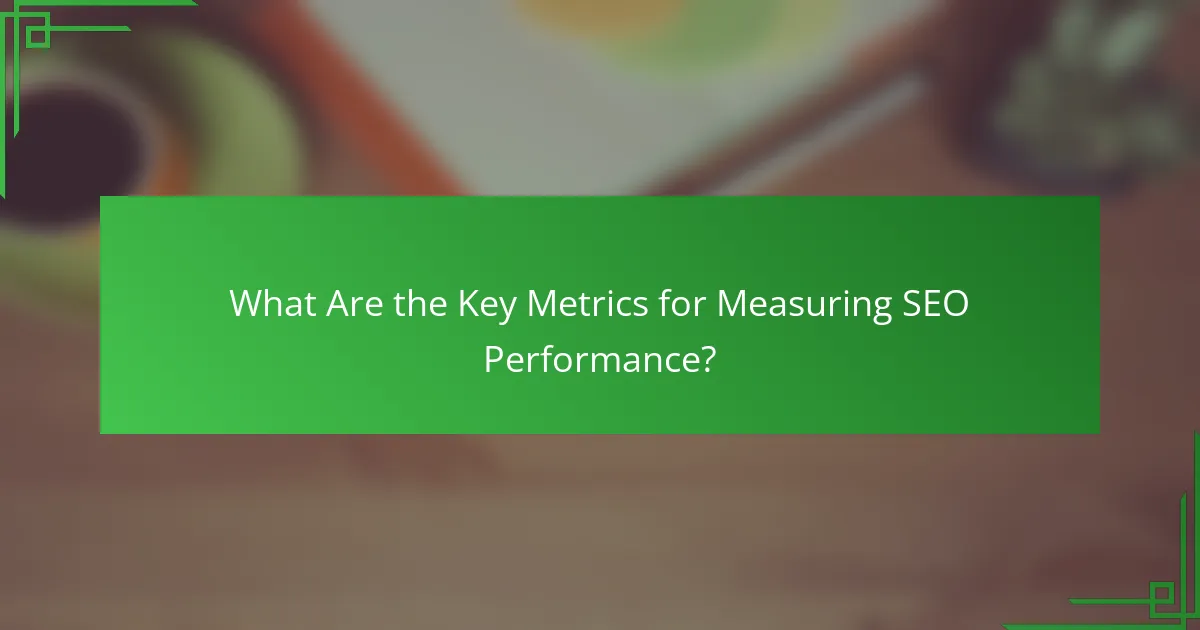Starting a digital agency requires a strong focus on SEO techniques to enhance visibility and drive organic growth. By implementing a blend of on-page, off-page, and technical strategies, along with effective content marketing, agencies can significantly improve their clients’ search engine rankings. Utilizing the right tools for keyword analysis and performance monitoring is essential to optimize online presence and achieve lasting success.

How Can Digital Agencies Boost SEO Visibility?
Digital agencies can enhance SEO visibility by implementing a mix of on-page, off-page, and technical strategies, alongside effective content marketing and local SEO tactics. These approaches work together to improve search engine rankings, drive organic traffic, and increase overall online presence.
On-page optimization techniques
On-page optimization involves refining individual web pages to rank higher and earn more relevant traffic. Key techniques include optimizing title tags, meta descriptions, header tags, and ensuring keyword placement throughout the content. Aim for a keyword density of around 1-2% to maintain readability while enhancing relevance.
Additionally, improving internal linking can help search engines understand site structure and distribute page authority effectively. Use descriptive anchor text and link to related content to enhance user experience and SEO value.
Off-page SEO strategies
Off-page SEO focuses on increasing a website’s authority through external factors, primarily backlinks. Building high-quality backlinks from reputable sites can significantly improve search rankings. Consider guest blogging, influencer partnerships, and participating in industry forums to generate these valuable links.
Social media presence also plays a role in off-page SEO. Sharing content on platforms like Facebook, Twitter, and LinkedIn can drive traffic and encourage backlinks, further enhancing visibility.
Technical SEO improvements
Technical SEO ensures that a website meets the technical requirements of search engines. Key aspects include improving site speed, ensuring mobile-friendliness, and implementing structured data markup. Aim for a page load time under three seconds to reduce bounce rates and improve user engagement.
Regularly auditing your site for crawl errors and optimizing your XML sitemap can help search engines index your pages more efficiently. Use tools like Google Search Console to identify and fix these issues promptly.
Content marketing integration
Content marketing is crucial for SEO visibility as it drives organic traffic and engages users. Create high-quality, relevant content that addresses the needs and interests of your target audience. Use a mix of formats, such as blog posts, videos, and infographics, to cater to different preferences.
Incorporate SEO best practices into your content strategy by using targeted keywords, optimizing headlines, and including internal and external links. Regularly updating content can also boost rankings and keep your audience engaged.
Local SEO tactics
Local SEO is essential for agencies targeting specific geographic areas. Optimize your Google My Business listing by providing accurate information, including your address, phone number, and business hours. Encourage customer reviews to enhance credibility and visibility in local search results.
Incorporate local keywords into your website content and meta tags to attract local traffic. Consider creating location-specific landing pages to further enhance your local SEO efforts and cater to the needs of your community.

What SEO Techniques Drive Organic Growth?
Effective SEO techniques are essential for driving organic growth by improving a website’s visibility in search engine results. Key strategies include keyword research, link building, content creation, and enhancing user experience.
Keyword research methodologies
Keyword research is the foundation of SEO, helping identify the terms and phrases potential customers use to find products or services. Utilize tools like Google Keyword Planner or SEMrush to discover relevant keywords with good search volume and manageable competition.
Consider long-tail keywords, which are more specific and often less competitive, making them easier to rank for. For example, instead of targeting “shoes,” aim for “women’s running shoes for flat feet.” This approach can attract more qualified traffic.
Link building best practices
Link building is crucial for establishing authority and improving search rankings. Focus on acquiring high-quality backlinks from reputable websites within your niche. This can be achieved through guest blogging, partnerships, and creating shareable content.
Avoid low-quality links, as they can harm your site’s credibility. Regularly audit your backlink profile to remove any harmful links and ensure a healthy link-building strategy.
Content creation strategies
Creating high-quality, relevant content is vital for engaging users and improving SEO. Develop a content calendar that addresses your audience’s needs and interests, incorporating targeted keywords naturally throughout.
Utilize various formats, such as blog posts, infographics, and videos, to cater to different preferences. Regularly update existing content to keep it fresh and relevant, which can positively impact your search rankings.
User experience enhancements
User experience (UX) directly influences SEO performance. Ensure your website is mobile-friendly, loads quickly, and has intuitive navigation. A well-structured site encourages visitors to stay longer, reducing bounce rates and signaling search engines that your content is valuable.
Implement clear calls-to-action and optimize for accessibility to enhance user engagement. Regularly test your site’s performance using tools like Google PageSpeed Insights to identify areas for improvement.

What Tools Are Essential for SEO Success?
To achieve SEO success, utilizing the right tools is crucial for optimizing your website’s visibility and driving organic growth. Essential tools help with keyword analysis, backlink tracking, performance monitoring, and content optimization.
SEMrush for keyword analysis
SEMrush is a powerful tool for keyword analysis, allowing you to identify high-traffic keywords relevant to your niche. It provides insights into search volume, keyword difficulty, and competitive analysis, enabling you to choose the best keywords for your SEO strategy.
When using SEMrush, focus on long-tail keywords that have lower competition but still attract significant traffic. This approach can lead to better rankings and more targeted visitors to your site.
Ahrefs for backlink tracking
Ahrefs is an essential tool for tracking backlinks, which are vital for improving your website’s authority and search rankings. It allows you to analyze your backlink profile, identify toxic links, and discover new link-building opportunities.
Utilize Ahrefs to monitor your competitors’ backlinks as well. This can provide insights into their strategies and help you find potential sites for your own link-building efforts.
Google Analytics for performance monitoring
Google Analytics is crucial for monitoring your website’s performance, offering detailed insights into user behavior and traffic sources. It helps you understand which pages are performing well and which need improvement, allowing for data-driven decisions.
Regularly check metrics such as bounce rate, average session duration, and conversion rates to gauge the effectiveness of your SEO efforts. This information can guide your optimization strategies moving forward.
Yoast SEO for WordPress optimization
Yoast SEO is a popular plugin for WordPress that simplifies on-page optimization. It provides real-time feedback on your content’s SEO performance, helping you optimize titles, meta descriptions, and keyword usage effectively.
Make use of Yoast’s readability analysis to ensure your content is accessible and engaging. This can enhance user experience and potentially improve your search rankings.

What Are the Key Metrics for Measuring SEO Performance?
Key metrics for measuring SEO performance include organic traffic growth, keyword ranking improvements, conversion rates, and bounce rates. These metrics help assess the effectiveness of SEO strategies and guide adjustments for better visibility and organic growth.
Organic traffic growth
Organic traffic growth refers to the increase in visitors arriving at your website through unpaid search results. Tracking this metric over time helps you understand the impact of your SEO efforts. Aim for consistent growth, ideally in the range of 10-30% over several months, depending on your industry.
To measure organic traffic, use tools like Google Analytics, which can provide insights into user behavior and traffic sources. Regularly analyze this data to identify trends and optimize your content accordingly.
Keyword ranking improvements
Keyword ranking improvements indicate how well your website ranks for targeted search terms. Monitoring these rankings helps you evaluate the effectiveness of your keyword strategy. Aim for higher positions, ideally within the top 10 results, as these spots receive the majority of clicks.
Utilize tools like SEMrush or Ahrefs to track keyword performance. Focus on long-tail keywords that are relevant to your audience, as they often have less competition and can lead to higher conversion rates.
Conversion rate optimization
Conversion rate optimization (CRO) measures the percentage of visitors who take a desired action, such as making a purchase or signing up for a newsletter. A higher conversion rate indicates effective SEO and user experience strategies. Typical conversion rates can vary widely, but aiming for 2-5% is a common benchmark.
To improve conversion rates, ensure your website is user-friendly, with clear calls to action and relevant content. A/B testing different elements can help identify what resonates best with your audience.
Bounce rate analysis
Bounce rate analysis tracks the percentage of visitors who leave your site after viewing only one page. A high bounce rate may indicate that your content is not engaging or relevant to users. Aim for a bounce rate below 50% for optimal performance.
To reduce bounce rates, enhance your content quality and ensure your site loads quickly. Consider implementing internal linking strategies to encourage users to explore more pages on your site.

How to Choose the Right SEO Strategy for Your Agency?
Selecting the right SEO strategy for your agency involves understanding your target audience, industry, and specific goals. A tailored approach that considers these factors will enhance visibility and drive organic growth effectively.
Understand Your Target Audience
Identifying your target audience is crucial for developing an effective SEO strategy. Consider demographics, interests, and online behavior to tailor your content and keywords accordingly. Tools like Google Analytics can provide insights into who is visiting your site and what they are looking for.
Engaging with your audience through surveys or social media can also help refine your understanding. This information allows you to create content that resonates with them, increasing the chances of higher engagement and conversions.
Analyze Competitors
Conducting a competitor analysis can reveal successful SEO strategies within your industry. Identify key players and examine their keyword usage, backlink profiles, and content strategies. Tools like SEMrush or Ahrefs can assist in gathering this data.
By understanding what works for competitors, you can find gaps in their strategies that your agency can exploit. This might include targeting underserved keywords or creating more valuable content that addresses user needs better than your competitors.
Set Clear Goals
Establishing clear, measurable goals is essential for any SEO strategy. Whether you aim to increase organic traffic, improve search rankings, or boost conversions, having specific objectives will guide your efforts. Use the SMART criteria—Specific, Measurable, Achievable, Relevant, Time-bound—to define these goals.
For example, instead of a vague goal like “increase traffic,” aim for “increase organic traffic by 30% over the next six months.” This clarity helps in tracking progress and adjusting strategies as needed.
Choose the Right Keywords
Keyword selection is a foundational aspect of SEO. Use tools like Google Keyword Planner to identify relevant keywords that your audience is searching for. Focus on a mix of short-tail and long-tail keywords to capture a broader range of search intents.
Prioritize keywords based on search volume, competition, and relevance to your content. A good rule of thumb is to target keywords with moderate search volume and lower competition to increase your chances of ranking higher.
Implement On-Page and Off-Page SEO Techniques
On-page SEO involves optimizing individual pages to rank higher and earn more relevant traffic. This includes using appropriate title tags, meta descriptions, and headers, as well as ensuring your content is high-quality and relevant.
Off-page SEO, on the other hand, focuses on building authority through backlinks and social media engagement. A balanced approach that incorporates both techniques will yield better results in terms of visibility and organic growth.
Monitor and Adjust Your Strategy
Regularly monitoring your SEO performance is vital for long-term success. Use analytics tools to track key metrics such as organic traffic, bounce rates, and conversion rates. This data will help you understand what is working and what needs improvement.
Be prepared to adjust your strategy based on performance. SEO is not a one-time effort; it requires ongoing optimization and adaptation to changes in search algorithms and user behavior.


